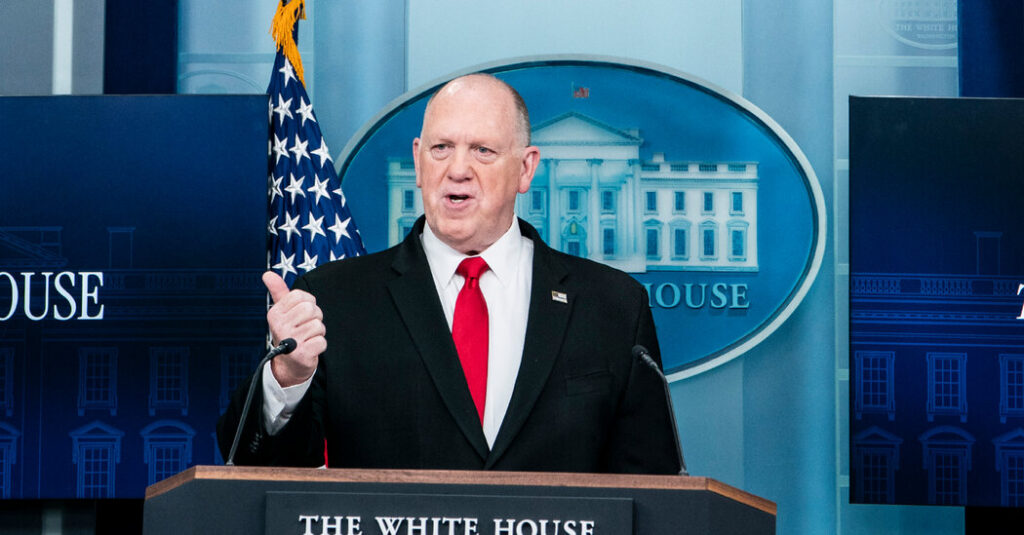On Monday, President Trump intends to issue two executive orders that will intensify his crackdown on immigration, particularly targeting local areas that he claims are not assisting with his administration’s aggressive deportation efforts.
These orders represent the latest move against so-called sanctuary cities, which are locations that either restrict or completely refuse to cooperate with federal efforts aimed at arresting undocumented immigrants. Frustrated with the pace of deportations, the president’s administration is unhappy that some localities do not keep migrants in custody longer so federal agents can detain them more easily.
According to White House Press Secretary Karoline Leavitt, one of the executive orders will instruct Pam Bondi, the attorney general, and Kristi Noem, the secretary of homeland security, to create and publish a list of state and local jurisdictions deemed as “sanctuary cities.” Additionally, the administration plans to initiate legal action against those officials who they believe are obstructing immigration enforcement.
Leavitt indicated that the second executive order aims to empower law enforcement across America to go after criminals more effectively. As reported by the New York Post, this order is also expected to provide legal backing for police officers facing allegations of misconduct and supply military-grade equipment to local police forces.
So far, the Trump administration has already filed a lawsuit against Rochester, N.Y., accusing the city’s officials of unlawfully obstructing immigration enforcement. Additionally, the Justice Department is taking action against a judge in Milwaukee, charging them with hindering immigration agents.
In response to the lawsuit, Rochester’s Mayor Malik D. Evans and City Council President Miguel Meléndez released a statement criticizing the legal action, calling it “political theater” rather than a legitimate legal pursuit. They emphasized that Rochester is focused on public safety for all, rather than executing immigration enforcement for the federal government.
At the same time, a federal judge in San Francisco has issued a temporary injunction preventing the government from enforcing a part of an executive order that would cut funding from cities and counties that do not cooperate with federal immigration efforts.
“It’s straightforward,” Leavitt stated on Monday. “Follow the law, respect the law, and do not obstruct federal immigration authorities and law enforcement when they are just trying to safeguard our communities from threats.”
These executive orders are timed to coincide with the impending 100th day of Trump’s second term, which falls on Tuesday. The White House has planned a week of events to highlight his actions thus far, starting with his immigration enforcement initiatives.
On Monday morning, the White House lawn displayed posters resembling mugshots of undocumented immigrants who had been arrested for allegedly committing crimes.
During a press briefing, Tom Homan, who oversees border policy for the Trump administration, reported that 139,000 deportations had been executed. This figure is lower compared to the final year of the Biden administration, which seemed to frustrate Homan.
He noted that the number would be higher, but due to a significant decline in border crossings, fewer individuals are available for removal.
“I’m not disappointed; the numbers are decent,” he remarked. “I see in the press that ‘Oh, ICE deportations are trailing behind Biden’s administration.’ But that’s because they counted removals at the border.”
Homan also announced that starting Tuesday, the administration would enforce a plan requiring undocumented individuals aged 14 and older to register and submit their fingerprints to the U.S. government, with potential criminal charges for noncompliance.


